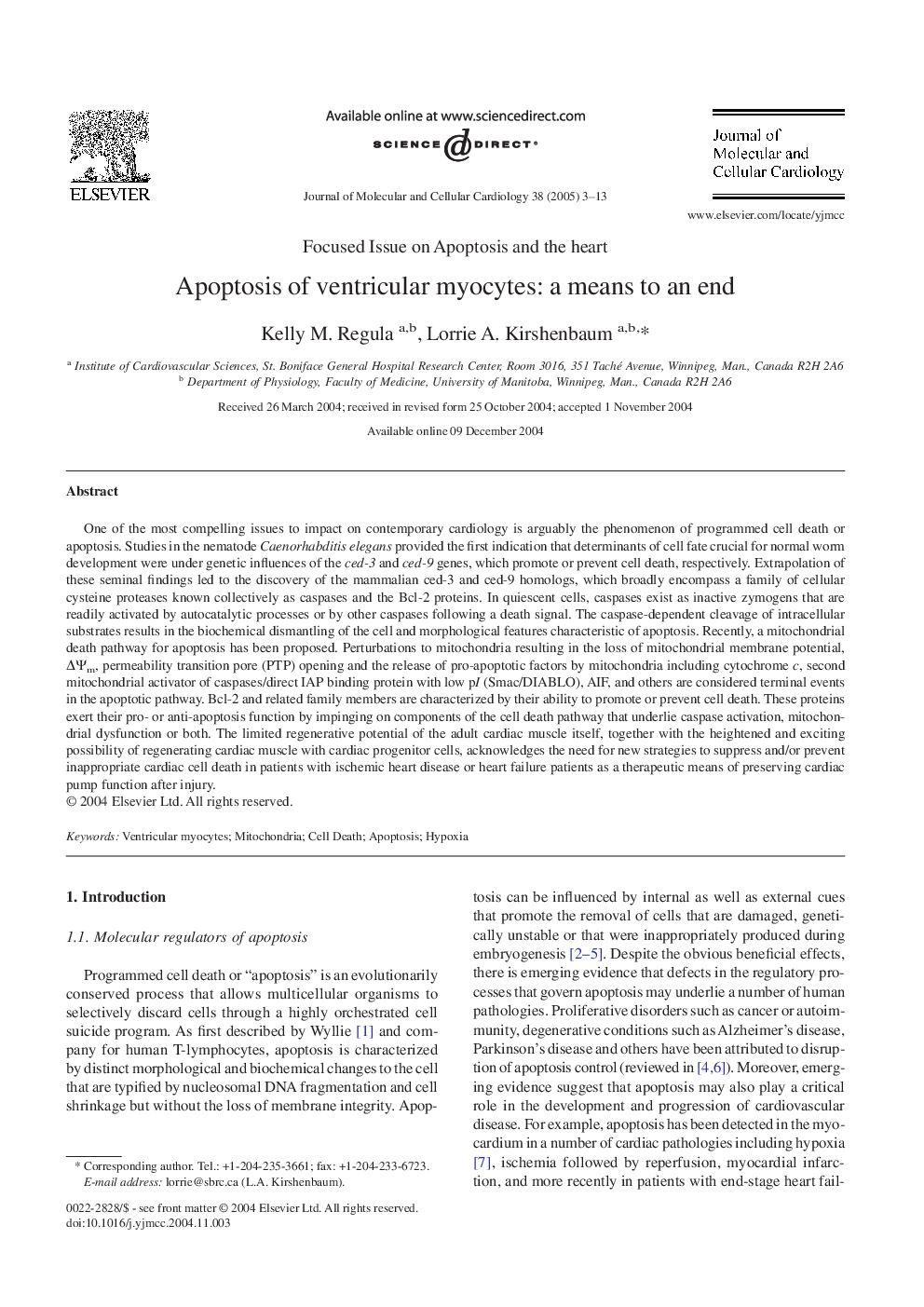| Article ID | Journal | Published Year | Pages | File Type |
|---|---|---|---|---|
| 10954726 | Journal of Molecular and Cellular Cardiology | 2005 | 11 Pages |
Abstract
One of the most compelling issues to impact on contemporary cardiology is arguably the phenomenon of programmed cell death or apoptosis. Studies in the nematode Caenorhabditis elegans provided the first indication that determinants of cell fate crucial for normal worm development were under genetic influences of the ced-3 and ced-9 genes, which promote or prevent cell death, respectively. Extrapolation of these seminal findings led to the discovery of the mammalian ced-3 and ced-9 homologs, which broadly encompass a family of cellular cysteine proteases known collectively as caspases and the Bcl-2 proteins. In quiescent cells, caspases exist as inactive zymogens that are readily activated by autocatalytic processes or by other caspases following a death signal. The caspase-dependent cleavage of intracellular substrates results in the biochemical dismantling of the cell and morphological features characteristic of apoptosis. Recently, a mitochondrial death pathway for apoptosis has been proposed. Perturbations to mitochondria resulting in the loss of mitochondrial membrane potential, ÎΨm, permeability transition pore (PTP) opening and the release of pro-apoptotic factors by mitochondria including cytochrome c, second mitochondrial activator of caspases/direct IAP binding protein with low pI (Smac/DIABLO), AIF, and others are considered terminal events in the apoptotic pathway. Bcl-2 and related family members are characterized by their ability to promote or prevent cell death. These proteins exert their pro- or anti-apoptosis function by impinging on components of the cell death pathway that underlie caspase activation, mitochondrial dysfunction or both. The limited regenerative potential of the adult cardiac muscle itself, together with the heightened and exciting possibility of regenerating cardiac muscle with cardiac progenitor cells, acknowledges the need for new strategies to suppress and/or prevent inappropriate cardiac cell death in patients with ischemic heart disease or heart failure patients as a therapeutic means of preserving cardiac pump function after injury.
Related Topics
Life Sciences
Biochemistry, Genetics and Molecular Biology
Cell Biology
Authors
Kelly M. Regula, Lorrie A. Kirshenbaum,
